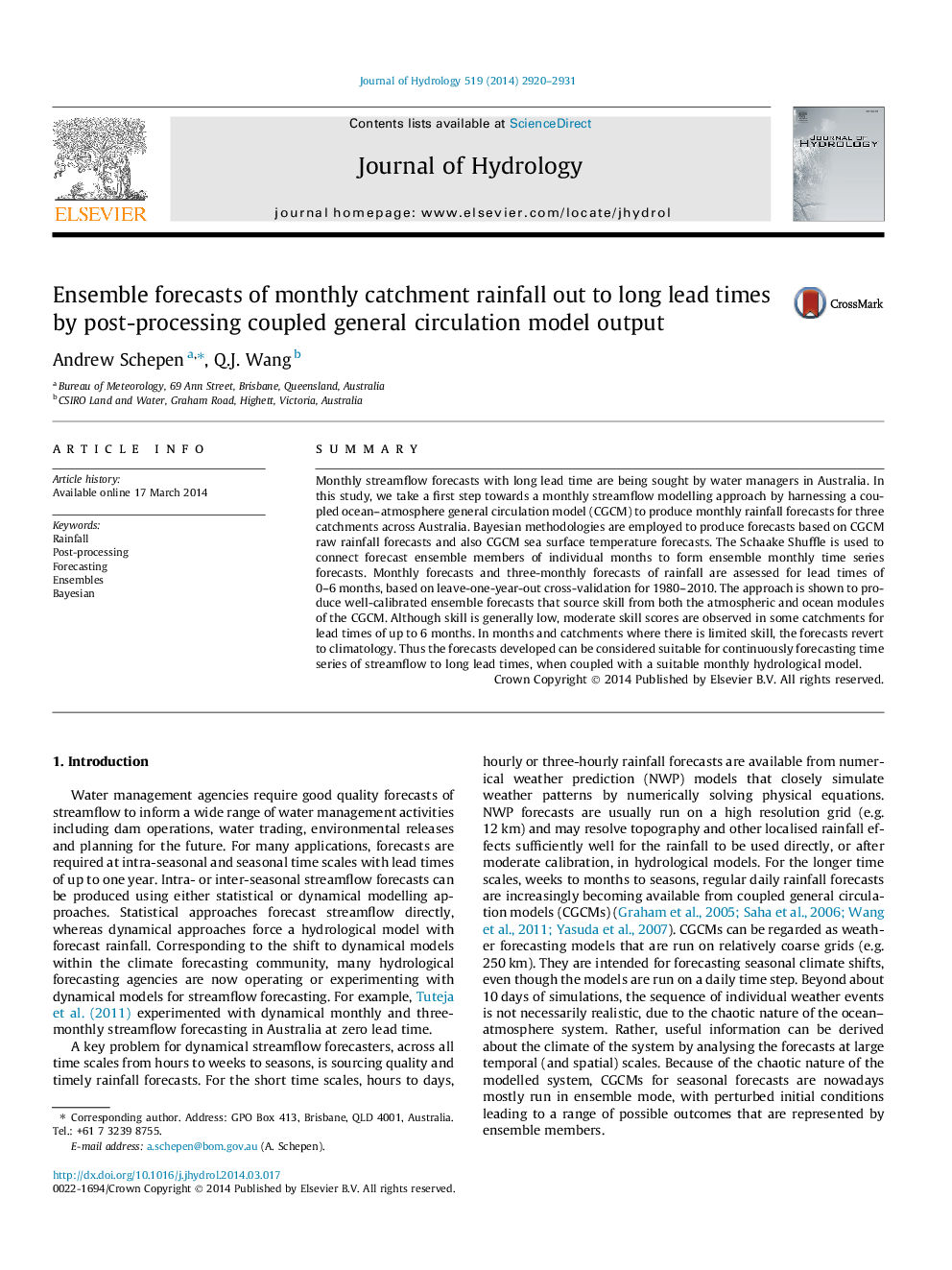| Article ID | Journal | Published Year | Pages | File Type |
|---|---|---|---|---|
| 6412154 | Journal of Hydrology | 2014 | 12 Pages |
â¢A Bayesian method for post-processing GCM outputs to forecast catchment rainfall.â¢Ensemble monthly time series forecasts out to 9 months are produced.â¢Forecasts are shown to be bias-free and statistically reliable.â¢Use of GCM SST forecasts in post-processing improves rainfall forecast skill.â¢The forecast ensembles can force a monthly streamflow forecasting model.
SummaryMonthly streamflow forecasts with long lead time are being sought by water managers in Australia. In this study, we take a first step towards a monthly streamflow modelling approach by harnessing a coupled ocean-atmosphere general circulation model (CGCM) to produce monthly rainfall forecasts for three catchments across Australia. Bayesian methodologies are employed to produce forecasts based on CGCM raw rainfall forecasts and also CGCM sea surface temperature forecasts. The Schaake Shuffle is used to connect forecast ensemble members of individual months to form ensemble monthly time series forecasts. Monthly forecasts and three-monthly forecasts of rainfall are assessed for lead times of 0-6Â months, based on leave-one-year-out cross-validation for 1980-2010. The approach is shown to produce well-calibrated ensemble forecasts that source skill from both the atmospheric and ocean modules of the CGCM. Although skill is generally low, moderate skill scores are observed in some catchments for lead times of up to 6Â months. In months and catchments where there is limited skill, the forecasts revert to climatology. Thus the forecasts developed can be considered suitable for continuously forecasting time series of streamflow to long lead times, when coupled with a suitable monthly hydrological model.
